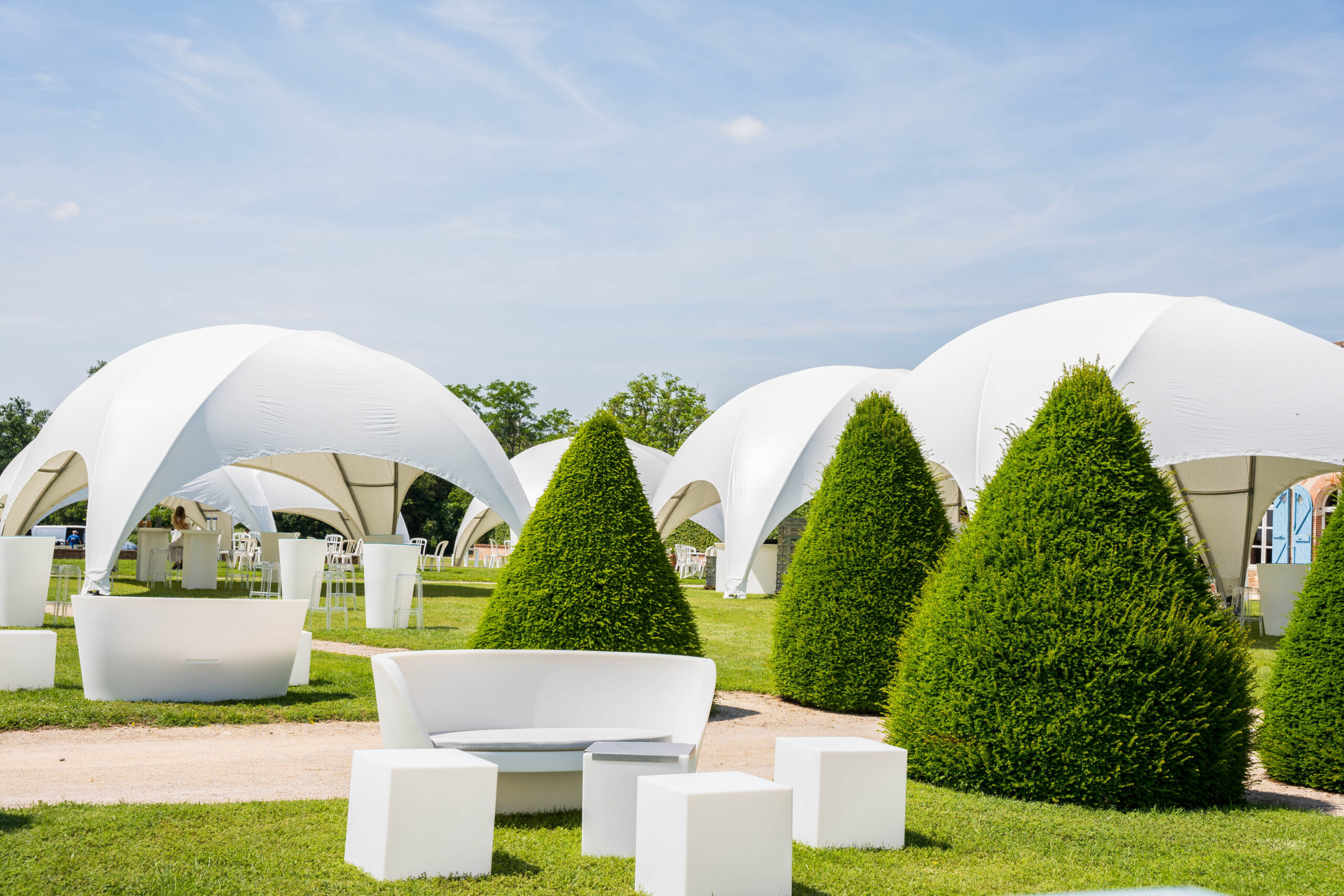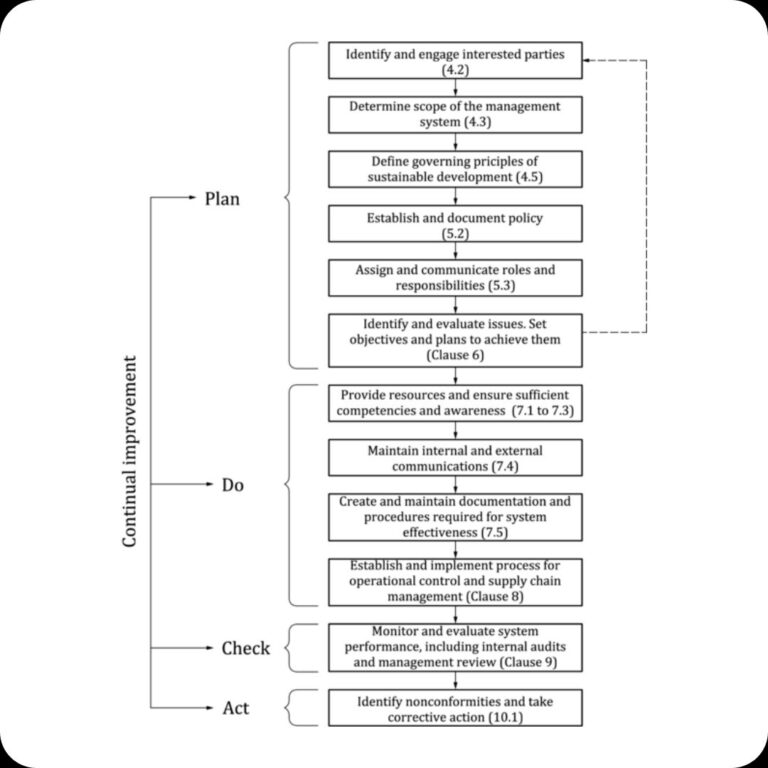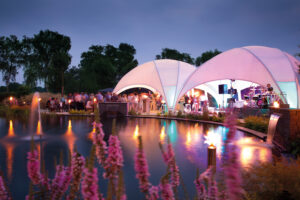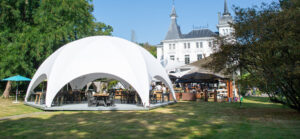Planning a sustainable event: a guide for event managers

Sustainable event planning is no longer just a trend—it’s a necessity. With businesses and attendees becoming more eco-conscious, event managers must integrate sustainability into their planning process. By making thoughtful choices, you can reduce your event’s environmental impact while delivering a high-quality memorable experience.
Table of contents
- Why prioritize sustainable event management
- Step-by-step guide to planning a sustainable event
- Location and transportation to the event
- Reduce waste with modular and reusable structures
- Sustainable catering choices
- Minimize carbon footprint with energy efficiency
- Sustainable materials and decoration
- Smart branding and customization
- Sustainable communication and awareness
- Why prioritize sustainable event management?

Why Prioritize Sustainable Event Management?
Events, from corporate conferences to large-scale festivals, generate significant waste and carbon emissions. By incorporating sustainable event management practices, businesses can:
- Reduce environmental impact 🌱
Events can generate a lot of waste, energy consumption, and CO₂ emissions. By planning sustainably, you reduce the ecological footprint, for example, by using less plastic and choosing green energy.
- Lower costs through energy and waste efficiencies 💰
Sustainable choices, such as reusable materials and digital tickets, can save money in the long run.
- Enhance brand reputation
Visitors and partners are increasingly valuing sustainability. A green event demonstrates that you operate responsibly in society.
- Improve attendee experience with eco-friendly elements
Many guests prefer environmentally responsible events and appreciate efforts to reduce waste and promote green initiatives.
- Legislation and Subsidies 📜
Some governments are increasingly encouraging sustainable initiatives with subsidies or requiring sustainability in permits.
- The Netherlands: The Dutch government offers subsidies and programs such as
MIA/VAMIL (for environmentally friendly investments) and Sustainable Event Subsidies through municipalities and provinces. - Europe: The EU has programs like
Green Deal Grants and the Horizon Europe program, which supports innovation and sustainability.
Many EU countries offer national subsidies, often through environmental or cultural ministries.
- United States: Some states, like California, offer subsidies for sustainable events, primarily through environmental organizations.
- Australia: Governments often offer subsidies for events that aim to reduce waste and energy consumption.
- Asia and Africa: Sustainability subsidies are less common, but some countries, like Japan and South Korea, have programs for environmentally friendly initiatives.
Step-by-step guide to planning a sustainable event
1. Location and transportation to the event
Select a venue committed to sustainability. The venue and travel logistics play a major role in sustainability. Ask yourself:
- Is the venue easily accessible by public transport, bike, or on foot?
- Can attendees be encouraged to carpool or use bike parking facilities?
- Are there charging stations for electric vehicles?
- Does the venue use renewable energy, separate waste, and have water-saving initiatives?
By selecting a green venue and promoting eco-friendly travel options, you significantly lower the event’s carbon footprint.
2. Reduce waste with modular and reusable structures
One of the biggest sustainability challenges in sustainable event planning is waste. Many event setups involve single-use structures and materials. Creative Structures offers a smart solution with modular tents, furniture, and decking that can be used repeatedly for different events. These products:
- Are designed for durability and long-term use
- Can be reconfigured to fit different event layouts
- Eliminate the need for disposable materials
- Are locally produced, reducing transportation-related emissions
- Come in compact transport packaging, ensuring efficient shipping

Same structure, different locations

Same structure, different locations

Same structure, different locations
3. Sustainable catering choices
Food and beverage options greatly impact an event’s sustainability. Consider:
- Offering locally sourced, organic, and seasonal products
- Providing vegetarian and vegan options
- Reducing food waste by careful planning and donating leftovers
- Using reusable or compostable dishware instead of single-use plastics
- Avoiding unnecessary packaging and encouraging recycling

4. Minimize carbon footprint with energy efficiency
Instead of relying on traditional power sources, consider using solar energy, LED lighting, and energy-efficient appliances. Creative Structures’ modular event structures can be easily adapted to support these energy-saving measures.
5. Sustainable materials and decoration
Many events produce unnecessary waste through disposable decorations and materials. To minimize impact:
- Use recycled or reusable materials
- Opt for decorations made from natural elements
- Reduce paper usage by relying on digital communication
- Ensure waste is properly sorted with designated recycling stations
6. Smart branding and customization
Branding is crucial for corporate events, but permanent, single-use signage is wasteful. Creative Structures offers customizable tents and furniture that can be branded with your logo, allowing personalization without unnecessary waste. It is even possible to print your logo on removable stickers.

7. Sustainable communication and awareness
Raise sustainability awareness among attendees by:
- Using digital invitations and event materials instead of printed versions
- Highlighting sustainable efforts on your website and social media
- Organizing activities that educate attendees on sustainability
- Partnering with eco-friendly organizations or charities
ISO 20121: a standard for sustainable event management

ISO 20121 is an international standard that provides guidelines for organizing sustainable events. It enables organizers to minimize their environmental impact, enhance their social responsibility, and achieve economic benefits at the same time. Developed by the International Organization for Standardization (ISO), this standard helps businesses and organizations implement sustainable practices throughout the entire lifecycle of an event.
Importance of ISO 20121
ISO 20121 is important for event managers who take sustainability seriously. It offers a structured approach to planning, organizing, and executing events that considers environmental, social, and economic aspects. By following this standard, event managers can demonstrate their commitment to sustainability while also improving the efficiency of their events.
The benefits of ISO 20121
- Lower environmental costs: By working according to ISO 20121, companies can better manage the environmental impact of their events, such as reducing energy consumption, minimizing waste, and utilizing local resources.
- Improved reputation: Companies that achieve ISO 20121 certification show their commitment to sustainability, boosting their credibility with clients, partners, and stakeholders who value sustainability.
- Risk management: ISO 20121 helps identify and manage potential risks associated with organizing events, such as legal compliance issues or reputational damage from environmental concerns.
- Access to new markets: Sustainability standards like ISO 20121 can help businesses enter new markets, as more customers and partners require sustainability in their choice of suppliers.
How to apply ISO 20121 in event planning
ISO 20121 covers the entire event planning process, from the initial concept phase to post-event evaluation. Key steps include:
- Planning and defining sustainability goals: Identify which aspects of your event you want to make more sustainable, such as reducing energy use, promoting sustainability among suppliers, or raising attendee awareness.
- Stakeholder engagement: Collaborate with suppliers, staff, and other stakeholders to set shared sustainability goals.
- Sustainability management: Set up systems to monitor and manage sustainability, such as tracking energy consumption, waste production, and the use of sustainable materials.
- Continuous improvement: Evaluate the sustainability of each event and continually work to improve for future events.
Conclusion
Sustainable event planning is not just about minimizing environmental impact—it’s about creating meaningful, responsible experiences that align with modern expectations. By integrating eco-friendly practices, event managers can reduce waste, lower costs, and enhance brand reputation while delivering high-quality events. From selecting green venues and optimizing transportation to choosing sustainable materials and adhering to ISO 20121 standards, every decision contributes to a more sustainable future.
Embracing sustainability in event planning is not only the right choice—it’s the smart choice. By taking proactive steps today, you can lead the industry toward a greener, more responsible tomorrow.


